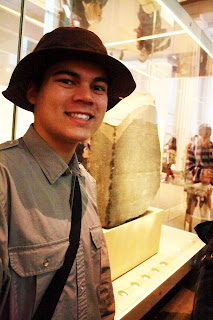Bitcoins…bitcoins...bitcoins! It seems like the world has all of the
sudden, or at least as of early this year, become entirely enamored with
bitcoins as evidenced by the overwhelming press coverage they have been getting
recently. I don’t know how I managed to
get this far in the year without writing about it because it has been a
fascinating phenomenon to watch unfold.
 Recall
from the end of my last post that bitcoins are an open-source fiat money that
is backed by no government or bank, but rather the citizens of the
internet. It is the most fiat of money for that very reason. Bitcoins have been around for several years,
beginning in 2009 and growing slowly in popularity since then. The exchange rate of dollars to bitcoins
began 2013 at around $13 and rose to an all-time high of $230 by April and then
dramatically crashed before leveling off around the hundred dollar mark where
it sits now, several months later. What
happened in those months that caused the sudden bubble and bust? I have a theory: an educated guess, if you
will based on a little reading and some mental puzzle-solving.
Recall
from the end of my last post that bitcoins are an open-source fiat money that
is backed by no government or bank, but rather the citizens of the
internet. It is the most fiat of money for that very reason. Bitcoins have been around for several years,
beginning in 2009 and growing slowly in popularity since then. The exchange rate of dollars to bitcoins
began 2013 at around $13 and rose to an all-time high of $230 by April and then
dramatically crashed before leveling off around the hundred dollar mark where
it sits now, several months later. What
happened in those months that caused the sudden bubble and bust? I have a theory: an educated guess, if you
will based on a little reading and some mental puzzle-solving.
Bitcoins
have been used primarily for ecommerce transactions of illegal goods because
they are, by design, international and anonymous (or at least very difficult to
track). Drugs, firearms, fake IDs, and
rather significantly more unsavory goods are dealt through illicit marketplaces
with bitcoins being used as the medium of exchange, internationally and
anonymously like the buyers and sellers themselves. Hold that thought in the back of your mind.
What
was going on in the world in early 2013, culminating in March? The European financial crisis had hit Cyprus
pretty hard. I even wrote a post about the
whole incident when it was happening. Cyprus
is a tax haven for Russian business magnates and so one of the things that was
suggested by the ECB/IMF/European Commission during the early weeks of March
(March 16th to be exact) was to confiscate 40% of the bank deposits
of uninsured accounts with a value over 100,000 Euros: essentially targeting
the Russian businessmen. This idea was
eventually dropped on March 25th, but during the days between the 16th
and 25th, the fate of those deposits were up in the air.
Before
looking at the exchange rate graph below, take a wild guess as to when the
bitcoin boom started, recalling that bitcoins are the de facto underground market
currency and that a substantial portion of Russia’s economy is built on the
dealings in such markets…and that Cyprus was a tax haven.
If you
guessed that the dramatic boom started in the third week of March, you’d be
correct! Bitcoins had been increasingly in
the public eye since the beginning of the year but the major step up began when
the deposits were threatened by seizure.
I suspect that the rest of the world noticed the inflation and
speculators carried the bitcoin’s value to its highest point even after the
deposits’ threat had gone away. Examine the
graph for a while and see if you can’t extract more insight from it. The events of the past few months on the web
and in the rest of the world are more interesting than ever and I suspect we
can learn about how humans deal with booms and busts by seeing the bitcoin
crisis as a microcosm of what has happened, and maybe will again, for other
securities and currencies in the rest of the world.






